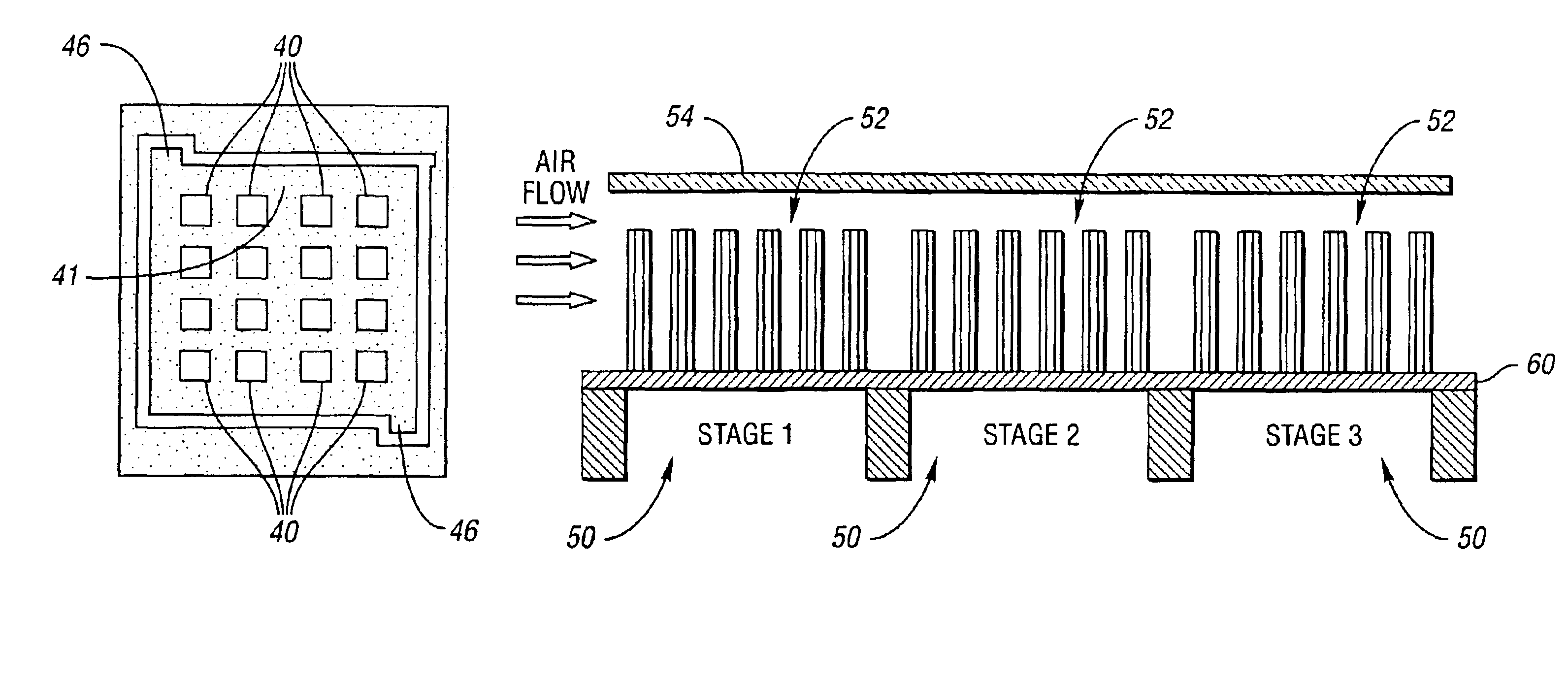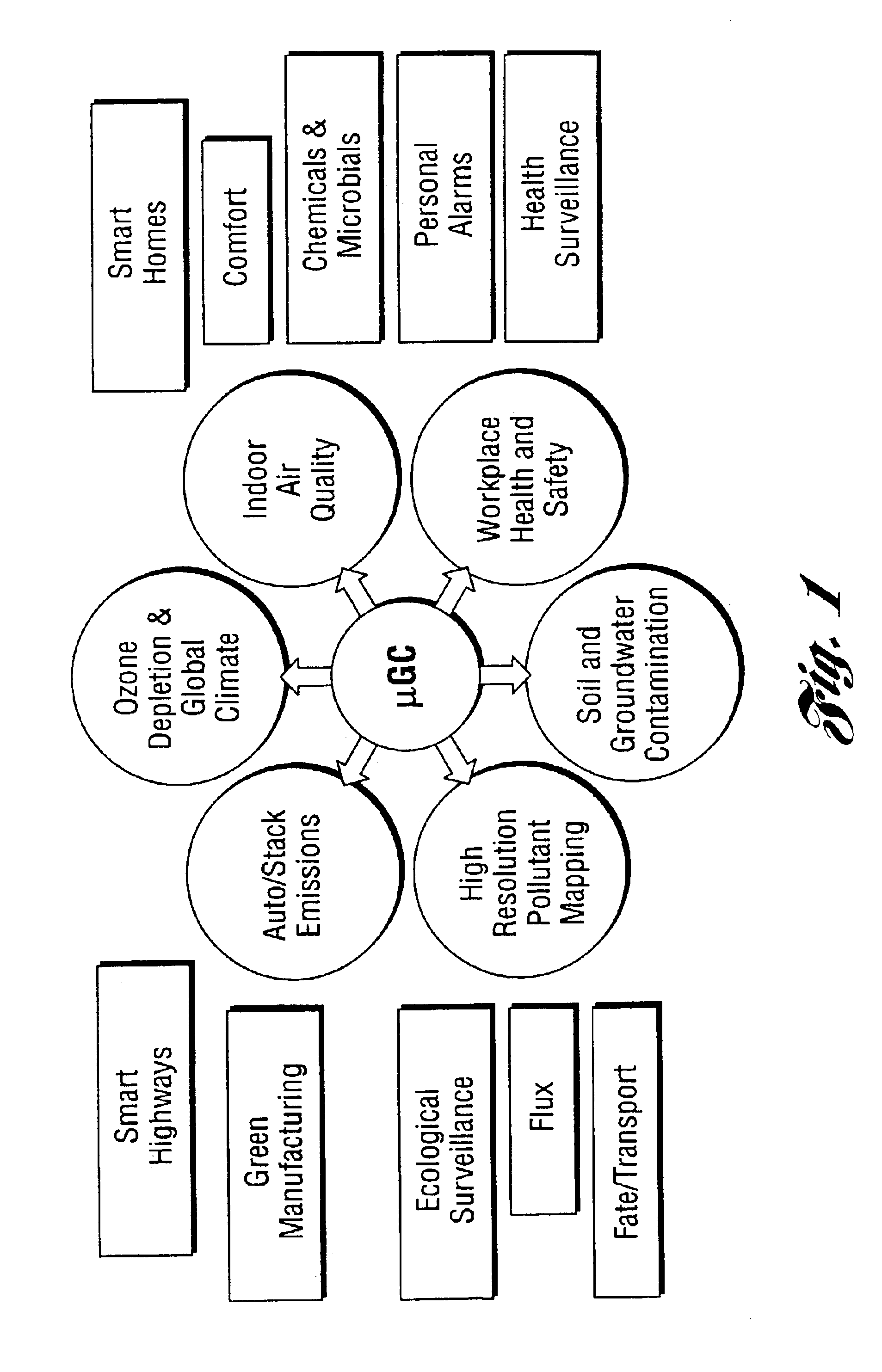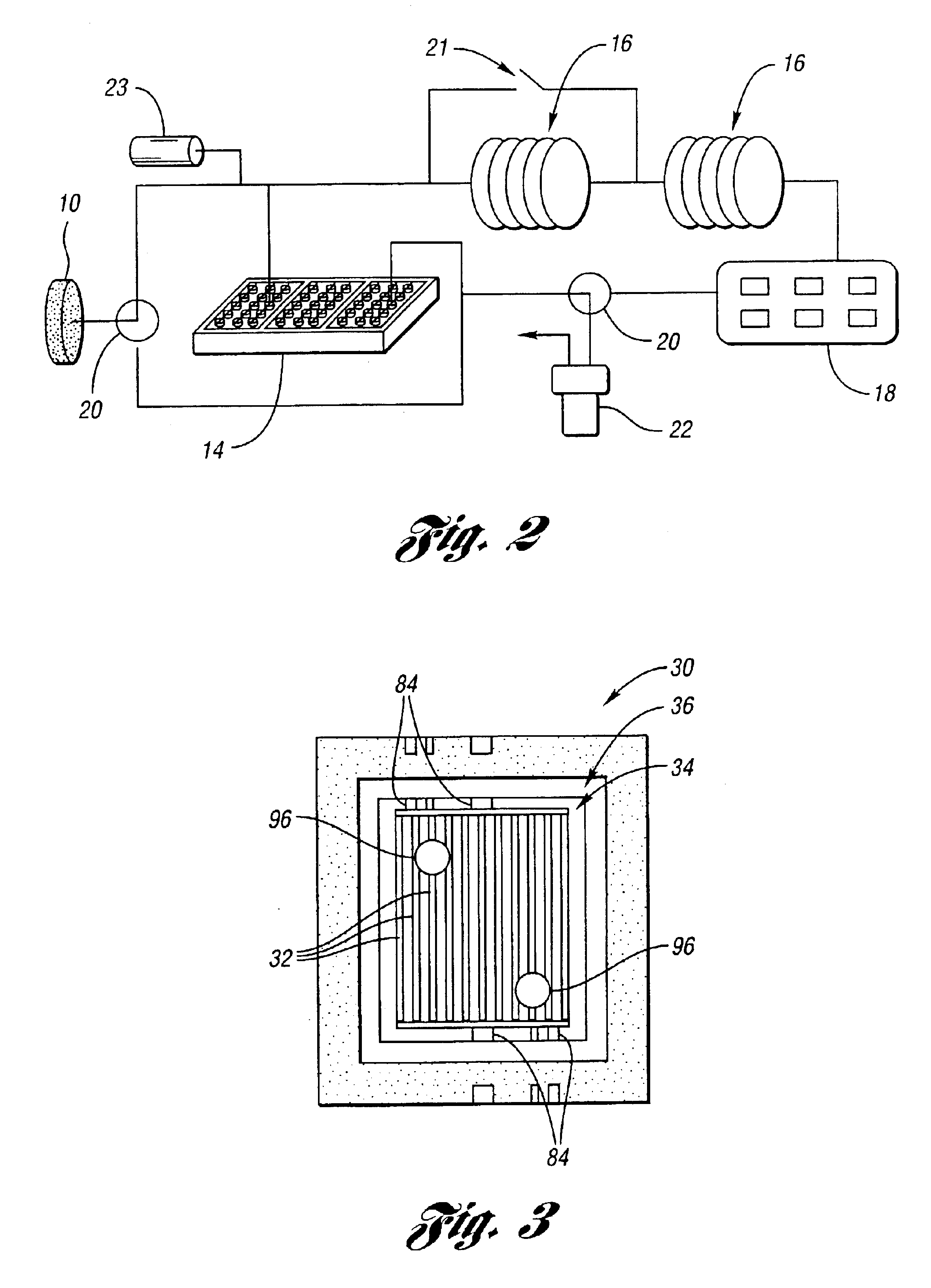Microelectromechanical heating apparatus and fluid preconcentrator device utilizing same
a technology of micro-electromechanical heating and fluid preconcentration, which is applied in the direction of lighting, heating apparatus, furniture, etc., can solve the problems of large size/weight, limited power requirements, and limited application of traditional gc instruments, so as to increase the porosity of heating elements, reduce the width of heating elements, and increase the surface area
- Summary
- Abstract
- Description
- Claims
- Application Information
AI Technical Summary
Benefits of technology
Problems solved by technology
Method used
Image
Examples
Embodiment Construction
[0063]The present invention relates generally to a micro analytical system and, in particular, to a high aspect ratio microheater, with tall and large surface area heating elements or structures, for a microfabricated preconcentrator / focuser (μPCF). This high aspect ratio bulk-micromachined Si heater can be packed in an embodiment with a small quantity of adsorbent material to form a μPCF. It is designed to preconcentrate vapors for subsequent focused thermal desorption and chemical analysis in a micro gas chromatograph (μGC). Previous efforts on miniaturizing PCFs have focused on thin heated membranes coated with adsorbents. However, they are limited in achieving high sensitivity and quantitative analysis due to small adsorbent capacity. Besides, as the adsorbent layer thickness is increased to reach sufficient capacity, the thermal transfer efficiency from the thin heater on the membrane decreases dramatically, calling for alternative heater designs. By using the μPCF of the prese...
PUM
 Login to View More
Login to View More Abstract
Description
Claims
Application Information
 Login to View More
Login to View More - R&D
- Intellectual Property
- Life Sciences
- Materials
- Tech Scout
- Unparalleled Data Quality
- Higher Quality Content
- 60% Fewer Hallucinations
Browse by: Latest US Patents, China's latest patents, Technical Efficacy Thesaurus, Application Domain, Technology Topic, Popular Technical Reports.
© 2025 PatSnap. All rights reserved.Legal|Privacy policy|Modern Slavery Act Transparency Statement|Sitemap|About US| Contact US: help@patsnap.com



